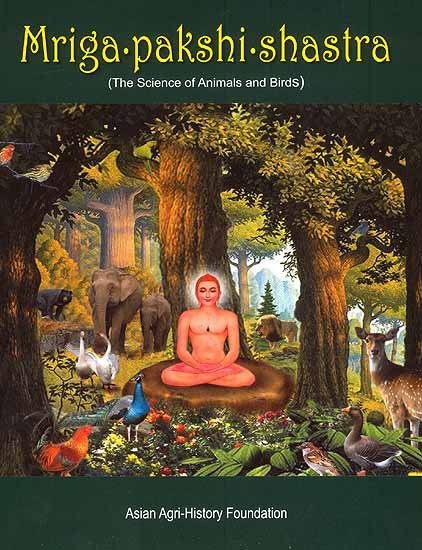Animal Kingdom (Tiryak) in Epics
by Saranya P.S | 2019 | 51,616 words | ISBN-10: 8190396315 | ISBN-13: 9788190396318
An English study the Animal Kingdom (Tiryak) in Epics.—The present thesis is based entirely on Ramayana and Mahabharata although an attempt is made to analytically compare the Animal kingdom with Mriga-pakshi-shastra—‘The ancient Indian science of of Animals and Birds’....
Chapter 3.1 - The story of Garuda (Bird characters, part 1)
In our country Garuda is respected and worshiped along with Shri Mahavishnu. Eagle is the mythological character in Indian culture. In Sanskrit literature many times Garuda is emphasized as the devourer of snakes. For example,
In Ramayana, Sita says to Hanuman,
trayanameva bhutanam sagarasyeha langhane |
shaktih syad vainateya sya tava va marutasya va ||“In this world, the capacity to cross the sea exists only in three things. They are garuda, the wind god and yourself.”[1]
The monkeys saw an eagle which was bright and strong like fire[2]. The weapon called paitamahastra has the beautiful and colourful feathers like hose of an eagle.[3] When Sugriva and other monkeys were hit by the Nagastra of Indrajit, Rama called Garuda to remove the snares of snakes. The Valmiki Ramayana narrates the story about the genealogy of garuda which consists of Visnu Brahma Marici, Kashyapa and garuda, Aruna and Garuda were the sons of Vinata.[4]
In Mahabharata, there is a story regarding Aruna and Garuda. Aruna became a charioteer of the Sun. Vinata laid an egg that took a thousand years for hatching. When the egg broke itself open, Garuda came with blazing effulgence or brilliance and rose up in the sky. His body as glowing likes the sun. He got the blessing from different deities. Further, there is a story about his valour and how he freed his mother from slavery by obtaining divine nectar from heavens[5]. Here
Garuda is described as:
gurum bharam samasadyonkina esha vihangamah |
garudastu khagashreshthstasmat pannaga bhojanah ||[6].
In Sanskrit Literature, many times Garuda is emphasized as the devourer of snakes. This is probably a reference to the sea eagle. If we go through the descriptions of Suparna as a vehicle of lord Vishnu, it may be the golden eagle that is described as having a golden body.
Footnotes and references:
[1]:
Valmiki Ramayana V.39.26a
[2]:
Ibid.VI.50.36
[3]:
Ibid.108.12a
[4]:
Ibid.III.14.32c
[5]:
Mahabharata 1.14.5.23
[6]:
Ibid.1.343
